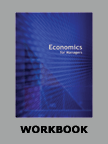Mittal Steel: Consolidating US Operations




|
|
ICMR HOME | Case Studies Collection
Case Details:
Case Code : BSTA008
Case Length : 12 Pages
Period : 1998 - 2005
Pub Date : 2005
Teaching Note :Not Available
Organization : Mittal Steel
Industry : Steel
Countries : USA
To download Mittal Steel: Consolidating US Operations case study (Case Code: BSTA008) click on the button below, and select the case from the list of available cases:

Price:
For delivery in electronic format: Rs. 300;
For delivery through courier (within India): Rs.
300 + Rs. 25 for Shipping & Handling Charges
» Business Strategy Case Studies
» Case Studies Collection
» Business Strategy Short Case Studies
» View Detailed Pricing Info
» How To Order This Case
» Business Case Studies
» Area Specific Case Studies
» Industry Wise Case Studies
» Company Wise Case Studies
Please note:
This case study was compiled from published sources, and is intended to be used as a basis for class discussion. It is not intended to illustrate either effective or ineffective handling of a management situation. Nor is it a primary information source.
|
|
<< Previous
Introduction
|
L N Mittal (Mittal), chairman Ispat International, had grown from a wire rod manufacturer with a single plant in Indonesia in 1976 to being the owner of a steel company with a market capitalization of roughly $3 billion and net sales of $2.7 billion in 1996. This impressive growth, which had attracted media attention all over the world, had been driven by a series of acquisitions in Mexico, Canada, Trinidad, Germany, Ireland, and Kazakhstan between 1992 and 1996. Most of these acquisitions followed a similar pattern. As governments around the world privatised their steel industries, Ispat bought underperforming mills, maximized production, and upgraded the product mix. As soon as Mittal acquired a firm, he redirected sales and purchasing internationally in order to fetch the best prices.
|
|
Mittal had realised that the price of the steel scrap, the raw material for mini-mills, would rise as more mini-mills were constructed. He had therefore invested in a substitute for scrap known as direct-reduced iron (DRI), and was soon producing more of it than any one else. DRI cost about $95 a tonne in 1996, compared with $155 a tonne for the high-quality scrap that mini-mills mostly used, and $125 a tonne for the pig-iron used to make steel in blast furnaces. DRI was not a proprietary technology, but it was complicated and hard to copy.
Ispat had two decades of experience and analysts believed that Ispat's lead in DRI technology was "virtually insurmountable for the foreseeable future"1. By acquiring underperforming mills at bargain prices, Ispat was investing less for each tonne of steel-making capacity than any other firm in the world...
Excerpts >>

|
|



